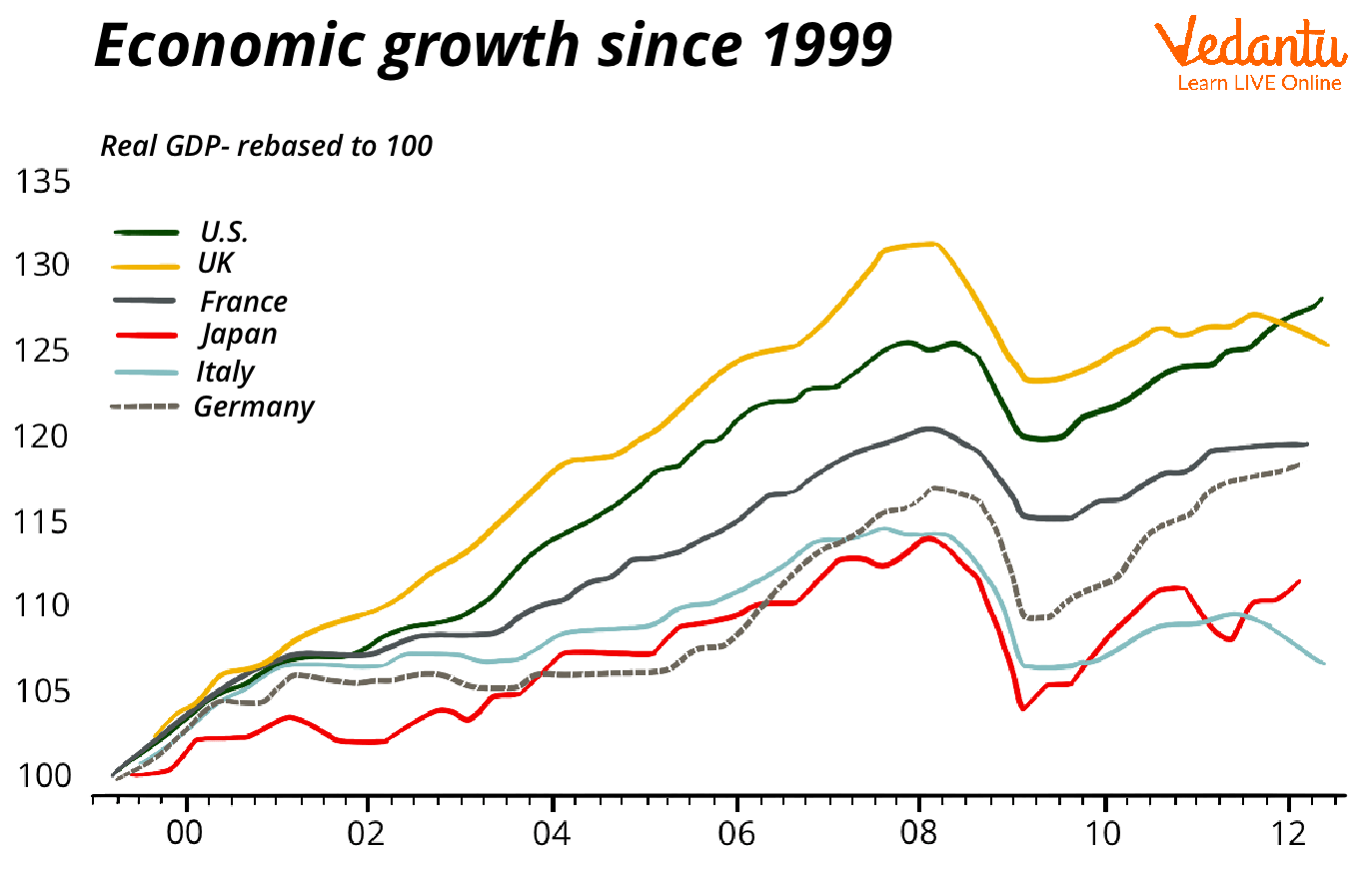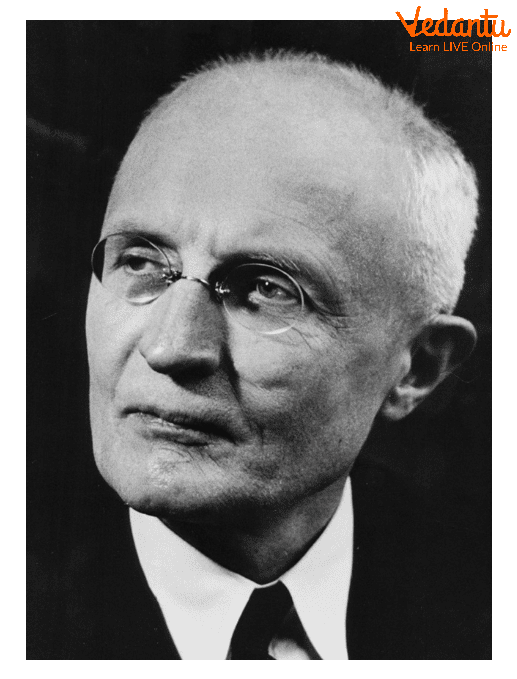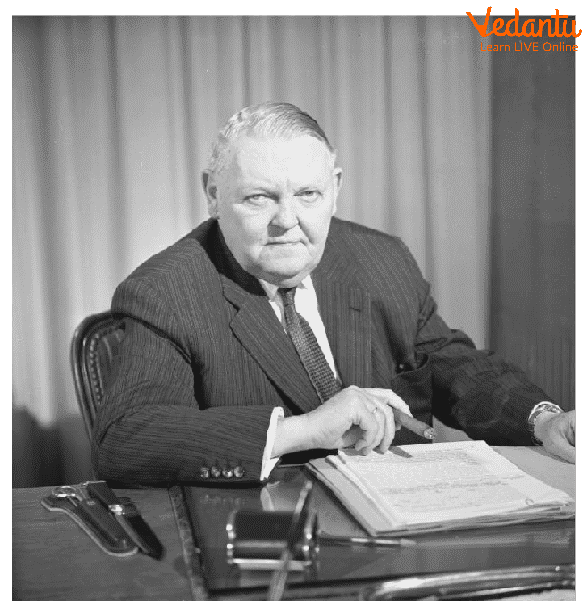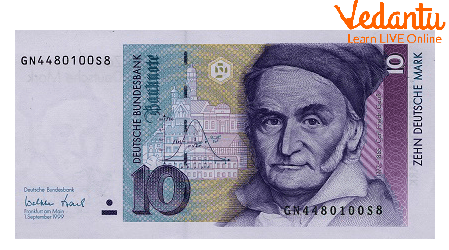




What is the German Economic Miracle?
Germany's rise to worldwide economic supremacy, known as the "German economic miracle" or Wirtschaftswunder, began after the close of WWII when most of the country lay in ruins. Large elements of its infrastructure had been targeted or bombed by Allied Forces. Dresden had been entirely devastated. Cologne's population has fallen from 750,000 to 32,000 people. In summary, Germany was a wrecked country with an extremely dismal future. However, by 1989, when the Berlin Wall collapsed, and Germany was reunified, it was the envy of the majority of the world. Germany was the world's third-largest economy, after only Japan and the United States in terms of GDP (GDP).

Germany's Economic Miracle GDP
Economic Depression in Germany
The statistics reveal a nation in turmoil. Industrial production fell by one-third. The housing supply in the country has been cut by 20%. Food output was half of what it had been before the war began. Many of the country's males between the ages of 18 and 35—the cohort that might practically rebuild the country—had been slain or disabled. During the war, Hitler implemented food rationing, limiting civilians to no more than 2,000 calories each day. Germany's currency, the Reichsmark, had become utterly worthless, forcing its people to rely on bartering for goods and services.
The country was held by four nations, and it will soon be divided in half. The eastern half became a socialist state, part of the Iron Curtain largely influenced by Soviet policies. The western half became a democracy. And caught in the centre was the old capital of Berlin, which was divided in two and subsequently separated by what became known as the Berlin Wall.
Walter Eucken, a German Economist
Walter Eucken was perhaps the most crucial figure in Germany's remarkable revival. Eucken, the son of a Nobel laureate in literature, studied economics at the University of Bonn. Eucken returned to his old school after serving in World War I. He later went on to become globally recognised for his work at the University of Freiburg.

German Economist Walter Eucken
Community-Based Free Market
Eucken attracted supporters at the school, which became one of the few venues in Germany where persons opposed to Hitler could express themselves. But, more crucially, it is where he began to formulate his economic views, which became known as the Freiburg School, ordoliberalism, or the "social free market." Eucken's principles were firmly established in the camp of free-market capitalism while still allowing for government engagement to guarantee that this system functioned for as many people as possible. For example, strict laws would be imposed to prevent cartels or monopolies from emerging. Furthermore, a substantial social welfare system would provide a safety net for people who are struggling.
The Response to Eucken
The sort of economic structure Eucken was proposing may sound entirely regular today, but it was considered somewhat radical at the time. Eucken's thought must be considered in the context of his time. The Great Depression, which affected the whole world, impacted Germany especially severely. Hyperinflation effectively destroyed the economy and paved the way for Hitler's ascension. Many individuals believed that socialism would be the economic ideology that swept the world. Soon after the war, the western part of Germany, now under American and Allied rule, would have to decide which road to economic success to choose.
Father of Germany's Economic Miracle
In the early years of West Germany, there was intense discussion on the course of the new state's fiscal policy. Many people favoured a system that nonetheless retained government authority, including labour leaders and Social Democrats. Ludwig Erhard, who became regarded as the "father of the German economic miracle," was a protégé of Eucken, who had started to rise in the American forces who were still in de facto control of Germany.

Ludwig Erhard: The Father of Germany's Economic Miracle
The New German Coinage
Erhard began to design a multi-pronged strategy to resurrect West Germany's economy once he obtained political power. First, he was instrumental in developing a new currency issued by the Allies to replace the obsolete remnants of the past. This proposal would lower the quantity of money available to the people by a stunning 93%, reducing the little wealth that German citizens and businesses possessed. In addition, major tax cuts were implemented in an effort to stimulate spending and investment.
The currency was supposed to be introduced on June 21, 1948. Clay informed Erhard that his experts had advised him that the Germans' dramatic new programme would be a horrible mistake. Erhard famously said, "Don't listen to them, General. My advisors all say the same thing." But, amazingly, Erhard proved everyone incorrect.

The New German Currency
The Economic Miracle Blossoms
West Germany sprang to life almost instantly. People quickly loaded stores with items as they understood the new money was worth. Bartering vanished shortly, as did the illegal market. In May 1948, Germans missed around 9.5 hours of work every week because they were anxiously hunting for food and other essentials. However, in October, only weeks after the new currency was implemented and price restrictions were abolished, that figure had dropped to 4.2 hours per week. In June, the country's industrial output was around half of what it had been in 1936. By the end of the year, it was close to 80%.
The Marshall Strategy
The European Recovery Program, sometimes known as the Marshall Plan, contributed to Germany's revival. This legislation, drafted by U.S. Secretary of State George Marshall, saw the United States give more than
Case Study: The Effect of the German Economic Miracle on the Global Level
Many economic impacts followed reunification. First, East German firms needed reform. Private property rights were essential to capitalism in West Germany, but East Germany broke them down. This would leave individuals and the government wondering who owns what. Restitution and property compensation were two possible remedies. 1992's Property Law promoted compensation above retribution. This was done to attract German investments by making it simpler to recompense previous property owners. The money supply shrank by 93%. On the same Sunday, the German Bizonal Economic Council enacted a price decontrol ordinance at Ludwig Erhard's urging and despite the objections of its Social Democratic members.
Conclusion
Germany was in the grip of the Cold War at the time. West Germany was a close friend of America, and it was largely a capitalist country, but the government played an important role in keeping the free market in check. East Germany was communist and strongly allied with the Soviet Union. Over 30 years after reunification, the East still has around 75% of the GDP of its contemporaries. None of this was even imaginable in 1948. And, without W Eucken and L Erhard, the German economic miracle may not have occurred.
FAQs on The German Economic Miracle: Post-War Growth
1. When did the German economy recover?
When the Allies consented to cease their occupation of the Ruhr and to provide the German government with a more reasonable payment schedule for reparations in 1924, the financial recovery that had started with the stability of the German currency in late 1923 gained momentum. These modifications had been suggested by a committee of the Allied Reparations Commission led by American businessman and soon-to-be vice president Charles Dawes, who also encouraged the Allies to provide Germany with significant loans to aid in her economic recovery.
2. What did Germany do during the Great Depression?
As a result of the Wall Street Crash in 1929, there was a global downturn. The recall of US loans, which brought about its economy's demise, led Germany to suffer more than any other country. Germans were desperate as unemployment and poverty skyrocketed. The Great Depression was particularly terrible in Germany, which had benefited from five years of fake prosperity, supported by American loans and goodwill, which culminated in the downfall of German democracy. As businesses closed or made cuts, unemployment struck millions of Germans. As banks failed, other people lost their savings.
3. Why is Germany so economically successful?
Germany has the largest economy in the European Union (EU) and the world's fourth-largest economy behind the United States, China and Japan. The German economy's competitiveness and worldwide networking may be attributed to its high level of innovation and a strong emphasis on exports. Exports make for well over half of overall sales in high-selling industries such as automobile manufacturing, mechanical and plant engineering, the chemicals industry, and medical technology. Germany's main commercial partners are the European Union, the United States, and China.





















